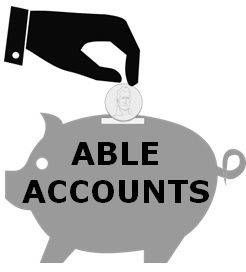
ABLE ACT: Legislation that Gives People With Disabilities the Ability to Save Money

Despite their considerable benefits, ABLE accounts still aren’t widely used. The Stephen Beck Jr. Achieving a Better Life Experience (ABLE) Act of 2014 recognizes the late Mr. Beck who paved the way for a better life for his daughter Natalie, and other persons with disabilities, by empowering millions of eligible Americans with disabilities to save money for their future. The ABLE Act established a tax-advantaged program for individuals and their families to save money for disability related expenses. Before the ABLE Act was passed, many individuals with disabilities were unable to save money to help pay for costly or big-ticket expenses without losing vital public benefits and forced to rely solely on these benefits. ABLE accounts were specifically designed to cover gaps in supports and services.
This program allows people of any age who developed a qualifying disability before age 26 to invest up to $15,000 per year in an account that grows tax-free and can be accessed tax-free. An individual who is employed may contribute additional funds under the Able To Work Act. These tax advantaged accounts are very similar to 529 plans for college. Currently, 43 states and the District of Columbia have ABLE, or 529A, programs. If your state does not have a program or you do not like your resident state’s program, you can open an account in any one of the 26 states that accept outside residents into their program. Each state has unique fees, maximum balance limits, and investment options.
One of the biggest advantages of an ABLE account is that people with disabilities can save money in their own name without risking their government benefits. In the past, if they held more than $2,000 in their name, they’d lose their Supplemental Security Income and Medicaid benefits until they spent down the money. Now, they can save up to $100,000 in an ABLE account without affecting their SSI benefits, and ABLE balances of any size don’t affect Medicaid eligibility.
Money in an ABLE account can be used for a wide range of goods and services as long as the expense helps improve the health, independence, and/or quality of life for the person with a disability. Withdrawals are tax-free for qualifying disability -related expenses, including, but not limited to housing, education, assistive technology, employment training, healthcare, wellness, basic living expenses, and transportation.
An ABLE account can be opened with as little as a $25 investment depending on the state. Plans usually offer a small variety of mutual funds in which money grows tax-free. You can also roll over money from a 529 college-savings account to an ABLE, up to the maximum annual ABLE contribution limit minus any other contributions for the year. This rollover can help families who saved in a 529C before their child was diagnosed with a disability.
For families with a loved one with special needs, planning for the future presents numerous challenges. It’s nearly impossible to predict what the future may hold, and there are many additional costs associated with a disability. The flexibility of ABLE accounts helps address these uncertainties with savings that can be used to meet each individual’s unique needs without jeopardizing eligibility of means-tested government benefits.
To highlight this flexibility, consider the needs of a 7-year-old boy who has been diagnosed with autism. His parents hope that he will eventually go to college, be employed and live on his own. This may or may not be possible. If possible, he may need to attend a special college or have additional supports at a traditional college. If not possible, he may benefit from a vocational program, job coaching, or other specialized supports. An ABLE account can be used for all of those possibilities, and his parents can save for the future without knowing exactly how those funds might be spent.
With an ABLE account, persons with disabilities can save money for large purchases necessary to improve their lives. Many times these funds are used to purchase costly accessible vehicles. Other benefits of ABLE accounts are fostering person centered independence, building self-reliance, encouraging employment, and improving quality of life. These accounts provide the opportunity for people with disabilities, who have the ability, to be employed and save and control their own money without jeopardizing their benefits. Living with a disability presents all sorts of challenges, ABLE accounts may offer solutions.
Visit the ABLE National Resource Center (www.ablenrc.org) for a map of each state’s program and other information.
Hope Trust serves clients throughout the United States.

